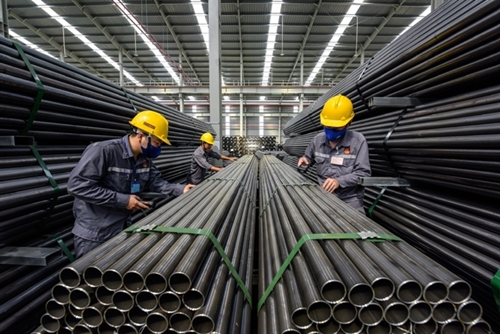The E.U. is closely monitoring several product categories from China, including steel, electronics, solar panels and wind turbines.
    |
 |
|
Workers check products at a Hoa Sen Group warehouse. (Photo courtesy of Hoa Sen Group) |
Thuy said, "E.U. officials have indicated that one side effect of the high tariffs imposed by the U.S. is a surplus of Chinese production.
"This means that goods that used to be exported to the U.S. may now be redirected to Europe. A senior E.U. official said: 'We may see trade diversion, as countries unable to export to the U.S. look for alternative markets. The E.U. will be ready to defend its market'."
In light of the E.U.’s tightened monitoring to prevent the influx of such goods, Thuy warned that Vietnamese exporters dealing in similar product lines should be wary of the risk of Chinese goods ‘masking their origin’ via Vietnam. She highlighted that this risk is now more tangible than ever.
"If it happens, the reputation of 'Made in Vietnam' goods will suffer severe damage. Moreover, the E.U. may respond by intensifying inspections, tightening preferential conditions or even imposing punitive tariffs on Vietnamese products,” she added.
To minimize risks, experts have recommended that Vietnamese businesses strictly manage their supply chains and ensure clear traceability of origin to avoid being implicated in trade fraud.
Businesses should also proactively ensure transparency in origin documentation, be well-prepared with supporting materials in case of inspection and closely monitor E.U. trade policy developments to adjust their export strategies promptly.
Importantly, businesses should enhance their competitiveness by focusing on product quality and real value-added elements to maintain a strong foothold in the European market.
Being cautious and proactive at this time will help Vietnam protect its exports to the E.U. and preserve its international reputation of goods amid an increasingly volatile global trade landscape.
The E.U. faced a similar situation in the steel industry in 2017, when the US closed its market to Chinese steel, resulting in a surge of such goods into the E.U.
At that time, the E.U. applied safeguard measures permitted by the WTO to restrict imports of certain products in response to the sudden market glut.
Source: VNA